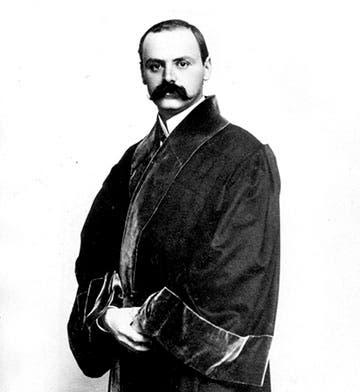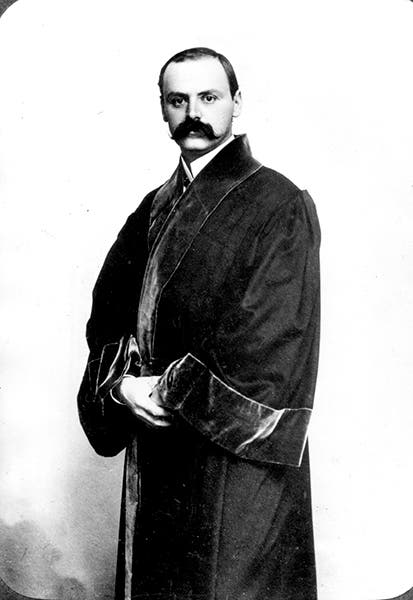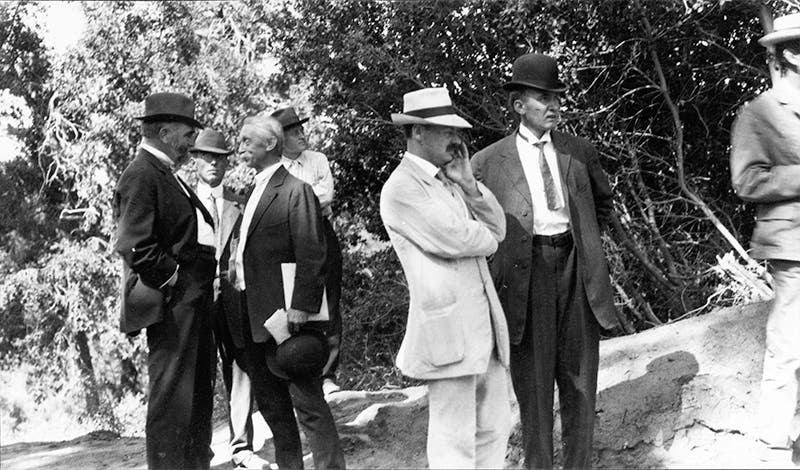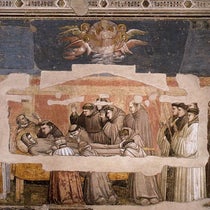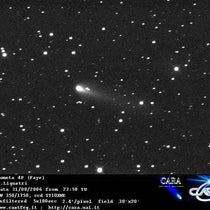Scientist of the Day - Karl Schwarzschild
Karl Schwarzschild, a German astronomer and mathematician, was born Oct. 9, 1873, in Frankfurt-am-Main, to Jewish parents. He showed an early interest in astronomy, and studied that science at the University of Strassburg, and then at Munich. He was hired by the observatory in Vienna, working primarily on photometry (the measurement of light from stars). He moved to Göttingen in 1901, where he associated with the great mathematicians David Hilbert and Hermann Minkowski. Eventually (1909, at age 36), he became the director of the Observatory at Potsdam, one of the most prestigious astronomical positions in Europe. He was there in 1914, when war broke out, and he promptly enlisted in the army, although he could have stayed put at Potsdam, had he chosen to do so. He was sent to Russia, to the eastern front, and while there he received an issue of the Sitzungsberichte (Proceedings) of the Berlin Academy of Sciences, containing a paper by Albert Einstein, arguing that gravity is merely the result of the curvature of space-time.
This paper set forth the general theory of relativity, a follow-up to the special theory of 1905. In the 1915 paper, Einstein wrote down, using metrics, what came to be called his "field equations," which, if solved, would allow one to calculate the forces of gravitation anywhere in space. These equations, if written algebraically, would constitute 10 equations in 10 unknowns, making them almost unsolvable But solutions could be approximated, enough so that Einstein could predict that light from the stars, if it passed close enough to the Sun, would be bent by the curvature of space. When this bending of starlight was observed during a solar eclipse in 1919, it was the first confirmation of general relativity, and it made Einstein world-famous.
Schwarzschild, in 1915, was one of the few who could work with Einstein's metrics, and he decided to see if he could find an exact solution to the field equations by considering a simple case, the curvature of space-time around a point-mass. And he was able to do so, providing the first exact solutions.to the equations of general relativity. He sent a short paper to Einstein from the Russian front, and Einstein was delighted, and arranged for Schwarzschild’s paper to be published in the Sitzungsberichte of the Berliin Academy (third image). He even used Schwarzschild's solution to refine his predictions about the bending of starlight and the precession of the perihelion of Mercury (another prediction of general relativity that would be confirmed). Schwarzschild sent a follow-up paper, and Einstein arranged for its publication as well (fourth image).
But there was another feature of Schwarzschild's papers that Einstein passed over in silence. Schwarzschild showed that there several singularities in the solutions. One of them occurred when the mass of a star was compressed within a certain size sphere. If the mass were great enough, and the radius of the sphere small enough, then radiation would have to travel greater than the speed of light to escape, which means it could not escape at all. A star that massive and that small would be effectively cut off from the outside world. Without using the term, Schwarzschild had predicted the existence of black holes.
Schwarzschild calculated that the radius at which a star of mass M would be cut off from the world was given by the (relatively) simple formula below (fifth image), where G is the universal gravitational constant. R, the radius, is now called the Schwarzschild radius, and the sphere that lies at that distance from a central mass is called the “event horizon”.
No one thought much about these theoretical black holes of Schwarzschild until J. Robert Oppenheimer and a graduate student showed in 1939 that black holes should really exist in space, the result of collapsing stars. Then the Schwarzschild radius became famous as a spatial cut-off, as it still is.
Schwarzschild did not live to see this happen. In fact, he didn’t even live to see his 1916 papers in print. Shortly after sending Einstein his two papers, he was cut down by a ghastly auto-immune disease that attacked his skin, sloughing it away, and causing his death in May of 1916. Einstein was aware of what Schwarzschild had done, but very few others would be until after Oppenheimer’s paper of 1939. I read an obituary for Schwarzschild, written by the great astronomer Ejnar Hertzsprung in 1917. He was effusive in his praise for Schwarzschild’s work as an astronomer. But he did not even mention general relativity, or Schwarzschild’s two papers of 1916.
The Emilio Segrè Visual Archives, part of the American Institute of Physics, have a few photographs of Schwarzschild. One, a formal portrait, shows him in his academic robes (first image). Since the photo is undated, I do not know where it was taken. But the other photo we show is the real treasure (second image). Taken in 1910 at a conference at Mount Wilson in Pasadena, California, the photo shows Schwarzschild, in the white suit, in discussion with Vesto Slipher, about to begin his spectral studies that would reveal that nearly all spiral nebulae are red-shifted, meaning they are moving away from us. The other notable in the photo is Jacobus Kapetyn, second from foreground left, who had just determined the size of the Milky Way galaxy, although, as Harlow Shapely would show within the decade, it was a size ten times too small.
Schwarzschild was buried in the Stadtfriedhof in Göttingen, which is the home for nine Nobel prize winners, all of them interred after Schwarzschild. There is a marker on his grave, where his wife and son, killed during the Holocaust, are also buried (sixth image).
William B. Ashworth, Jr., Consultant for the History of Science, Linda Hall Library and Associate Professor emeritus, Department of History, University of Missouri-Kansas City. Comments or corrections are welcome; please direct to ashworthw@umkc.edu.

